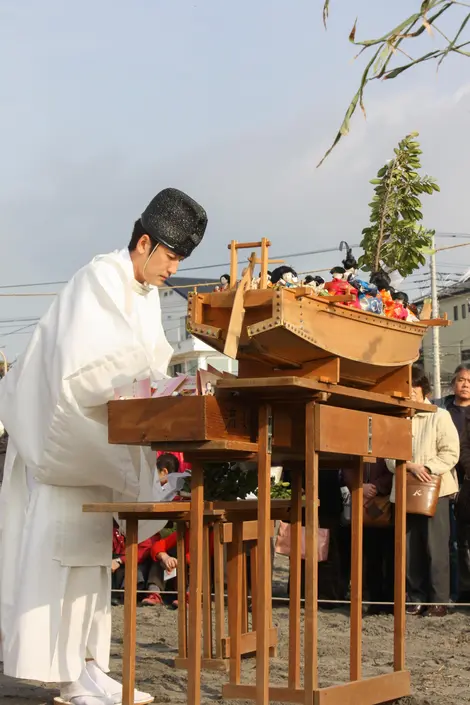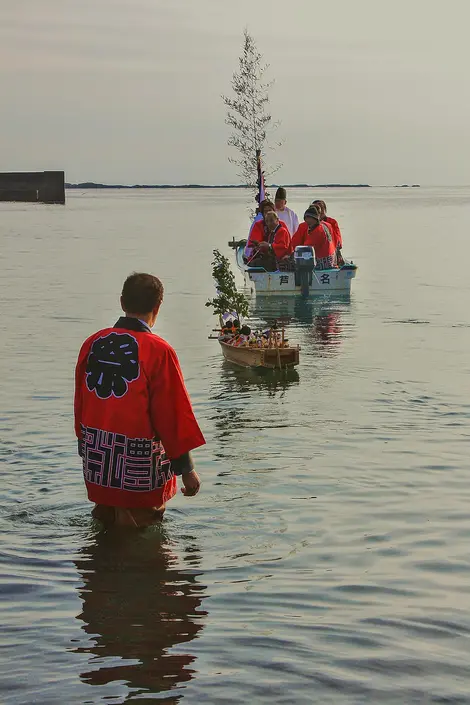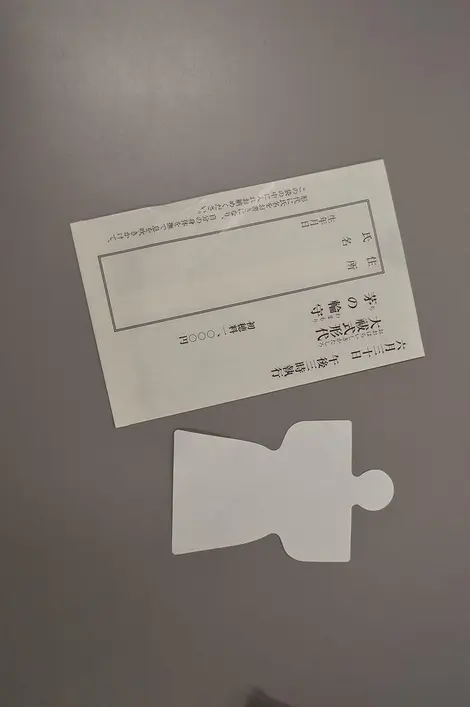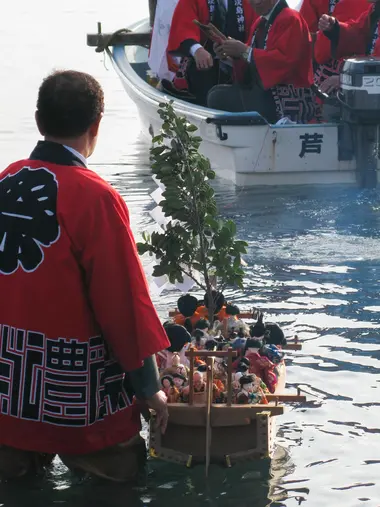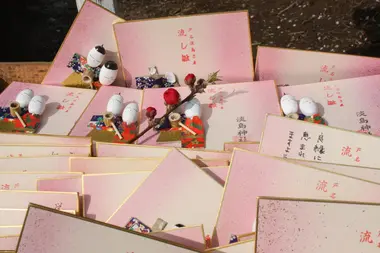The Hina Nagashi Festival 雛流し祭り
And sail the dolls
Before being decorative objects or toys, Japanese dolls first had a protective and even exorcising role. The Japanese believed that they preserved disease and bad luck and that they had a soul.
ancient customs
In antiquity, a Shinto rite consisted in beating the body with human-shaped straw or paper dolls called hitogata (which literally means "human form") to purify oneself. They were then thrown into the river or the sea so that they would carry away with them human sins and evils. This rite was also practiced by the emperors of Japan who, strongly influenced by Chinese culture, had made this practice coincide with the date of a Chinese custom of purification by water which took place on the third day of the third month , according to the lunar calendar. On that day, the emperor's body was hit with a doll so that the evil that could inhabit it would be transferred to the doll.
In the Heian era (794-1191) , this custom spread among the high nobility. As for the common people, mostly peasants , the month of March heralded the arrival of spring and the start of work in the fields. At this time of the year, the peasants practiced fasting in honor of the god of the fields and they too flogged themselves with dolls of human form to exorcise the evil, to transfer their impurities on these "human forms" which they then threw to the 'water.
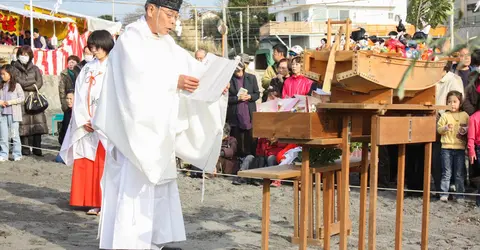
Prayer for dolls
IoT
From top to bottom of the social ladder, the same rites of exorcization took place using dolls. Later, under the influence of Buddhism, people began to bring the hitogata to the temple where a monk recited prayers to purify the dolls in turn and thus rid them of the evil that had been transmitted to them. They were then thrown into the water or burned . In some places, a couple of straw dolls were made that were installed on a small straw boat too, and that were made to float on the water always with the aim of making them carry away human evils.
See also: Japanese superstitions
But at the end of the Muromachi era (1336-1573), the dolls took on a more elaborate form. They were sometimes made of wood or clay and covered with fabric. After taking them to the temple, the nobles began to display them in their homes instead of throwing them away. More and more pretty and sophisticated , they gradually lost their role of exorcist to become decorative objects .
However, in some places in Japan, the custom of throwing the dolls into the water remained. It is called hina-nagashi or nagashi-bina , which literally means " floating doll " . Nor has the belief in their role as exorcisers disappeared. Some Shinto shrines still provide tiny papers cut in human form with which one rubs the body and then on which one must blow to transmit impurities and problems to them. These human forms are then purified by a priest before being burned or thrown into the water.
Read: Japanese dolls
Where to see a hina-nagashi ceremony?
Nowadays, a few Shinto shrines, the Awashima shrines , hold a ceremony to "purify" the dolls before floating them in a stream. This event takes place on March 3, which is Little Girls' Day, or hina matsuri, literally " Doll Day ". The shrines bearing the name of Awashima are dedicated to women's issues : marriage, fertility, childbirth, gynecological diseases and others.
To read: Hina Matsuri, the little girls' party
According to the sanctuaries, the dolls are directly thrown into the water on small baskets or boats made of straw or wood or, for ecological reasons, they are gathered on a mini boat which is floated for a certain time before being released. collect and burn them. Cards in biodegradable paper representing the emperor and the empress (as for the exhibition of the hina matsuri dolls), are also sold to people who wish to get rid of their bad luck by throwing them in the water.
- The most famous place to witness the hina-nagashi ceremony is Awashima-jinja Shrine in Wakayama City . After a magnificent ceremony of purification of the dolls practiced by Shinto priests and their assistants, the miko, the dolls are put on a small boat which is launched on the sea.
Ceremony from 12 p.m., the dolls are floated around 1 p.m.
The shrine is located a fifteen-minute walk from Kada Nankai station.
- At Shimogamo Shrine in Kyoto small straw dolls (sandawara ) are sold to visitors who can float them on the Mitarashi River which flows near the shrine. A man and woman dressed as the Emperor and Empress open the ceremony and first flutter their sandawaras before the crowd throws theirs.
From 10:30 a.m.
Take bus #205 from Kyoto Station and get off at Shimogamo Jinja-mae stop.
- The Awashima-jinja shrine in Yokosuka , about sixty kilometers south of Tokyo, is much less famous but also has a very beautiful ceremony. The dolls, gathered on a small wooden boat, are pulled by a boat with on board the superior priest of the sanctuary and the dignitaries of the city.
The ceremony begins around 1 p.m. at the sanctuary then continues on the beach (with the heron dance performed by a priest and a miko ) and the boat leaves around 3 p.m.
Take the bus from JR Zushi Station to Jorakuji Stop. About a 25 minute ride then a 10 minute walk to the beach. The sanctuary is located at the top of the beach.
Address, timetable & access
Address
Access
March 3 every year





